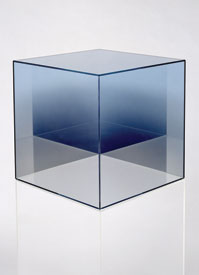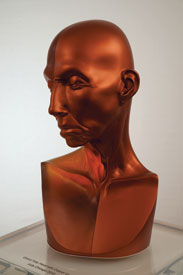Successful glass artist Karen Bexfield is a self described servant of her insatiable curiosity. Trained as a physical therapist Bexfield came to glass making through her interest in wood and stone sculpture and other art forms.
“I went into a glass studio with a simple question and became intrigued with the beauty and scientific complexity of glass as an art form,” Bexfield recalls.
“As my work grew I began to use organic penetrations of my forms to cast interesting shadows so the ephemeral overall shape is activated by its shadows.”
She explains that her inquisitive nature leads her to want to know how things work. Whether working on the structure of the human body to help reverse an injury or while building one of her lace-like glass sculptures Bexfield wants to understand the inner forces in order to find the intricate balance between materials, techniques and self expression.
Albuquerque artist Sarah Nelson recently completed an artist residency alongside Bexfield at the Pilchuck Glass School near Seattle.
“While I was in the program I found whole new ways of working that I hadn’t tried before. I’m now using glass in a more painterly way and it opens up a lot of new possibilities,” Nelson said. “The new approach to glass making felt threatening in the beginning, though once I started seeing in a new way everything turned upside down. I have a new direction to explore and I still have my early work to fall back on.”
| 


